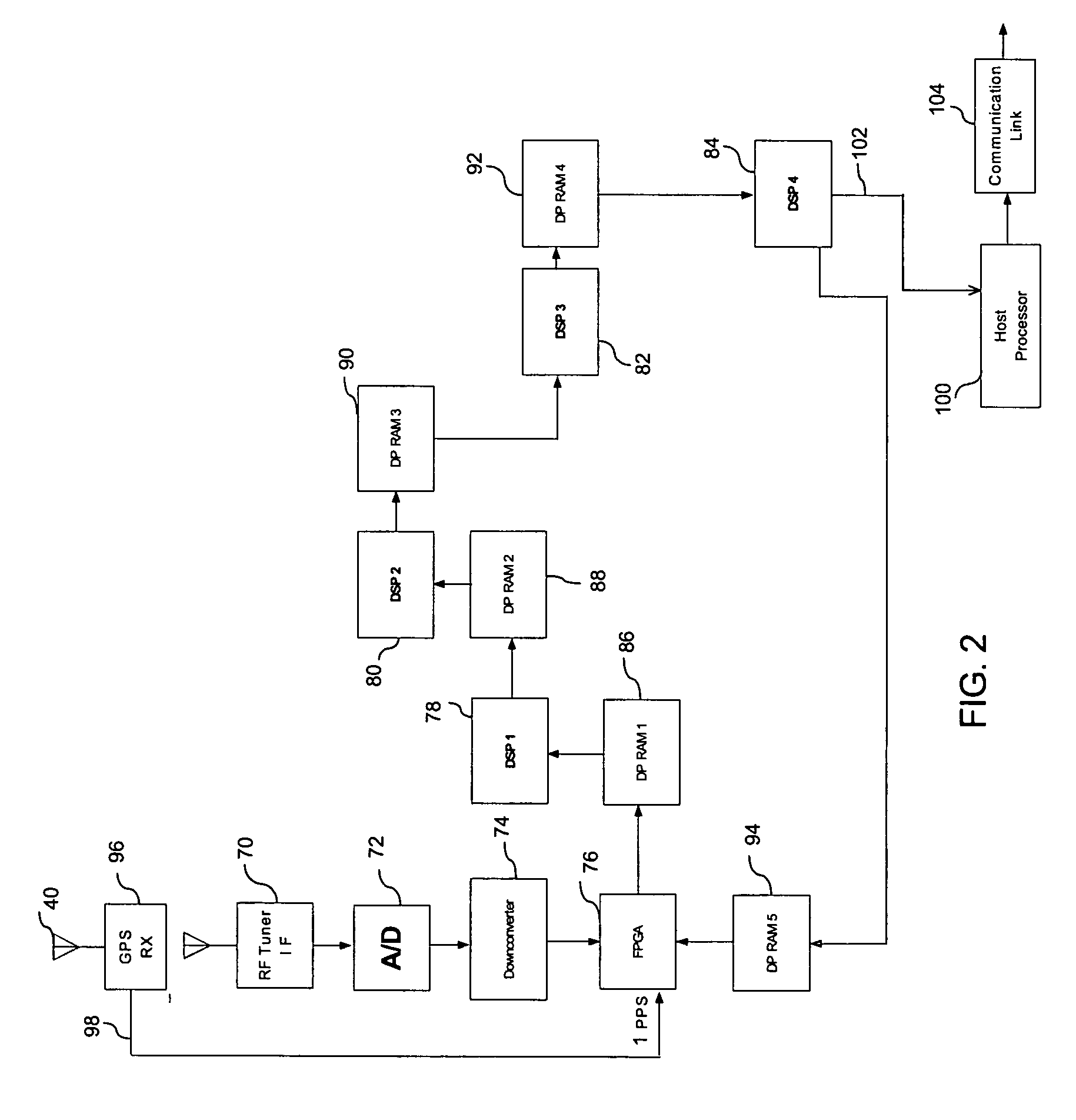Error correction in a locating method and system
a technology of error correction and locating method, applied in the field of communication, can solve problems such as computationally intensive processing techniques
- Summary
- Abstract
- Description
- Claims
- Application Information
AI Technical Summary
Benefits of technology
Problems solved by technology
Method used
Image
Examples
Embodiment Construction
[0009]The inventors of the present invention have innovatively realized that by detecting information encoded in a transmitted digital signal, such as an Enhanced Digital Access Communications System (EDACS®), a SmartZone®, or a Project 25 formatted radio signal, the location of a transmitting unit may be quickly and efficiently determined based on time delay of arrival of a signal received at three or more spatially separated receivers. In an aspect of the invention, correlated bit transitions in a decoded digital data string are time stamped, and the resulting time stamps are compressed and provided to a central site. In another aspect of the invention, the respective times of arrivals for multiple bit transitions in the digital signal may be averaged to generate an average time of arrival for the entire decoded digital data string. The time stamp information from each of the receivers is used to determine a time delay of arrival of the signal at the spatially separated receivers....
PUM
 Login to View More
Login to View More Abstract
Description
Claims
Application Information
 Login to View More
Login to View More - R&D
- Intellectual Property
- Life Sciences
- Materials
- Tech Scout
- Unparalleled Data Quality
- Higher Quality Content
- 60% Fewer Hallucinations
Browse by: Latest US Patents, China's latest patents, Technical Efficacy Thesaurus, Application Domain, Technology Topic, Popular Technical Reports.
© 2025 PatSnap. All rights reserved.Legal|Privacy policy|Modern Slavery Act Transparency Statement|Sitemap|About US| Contact US: help@patsnap.com



